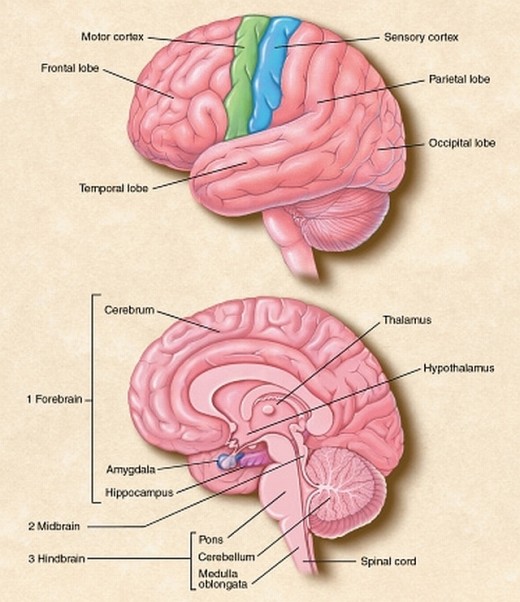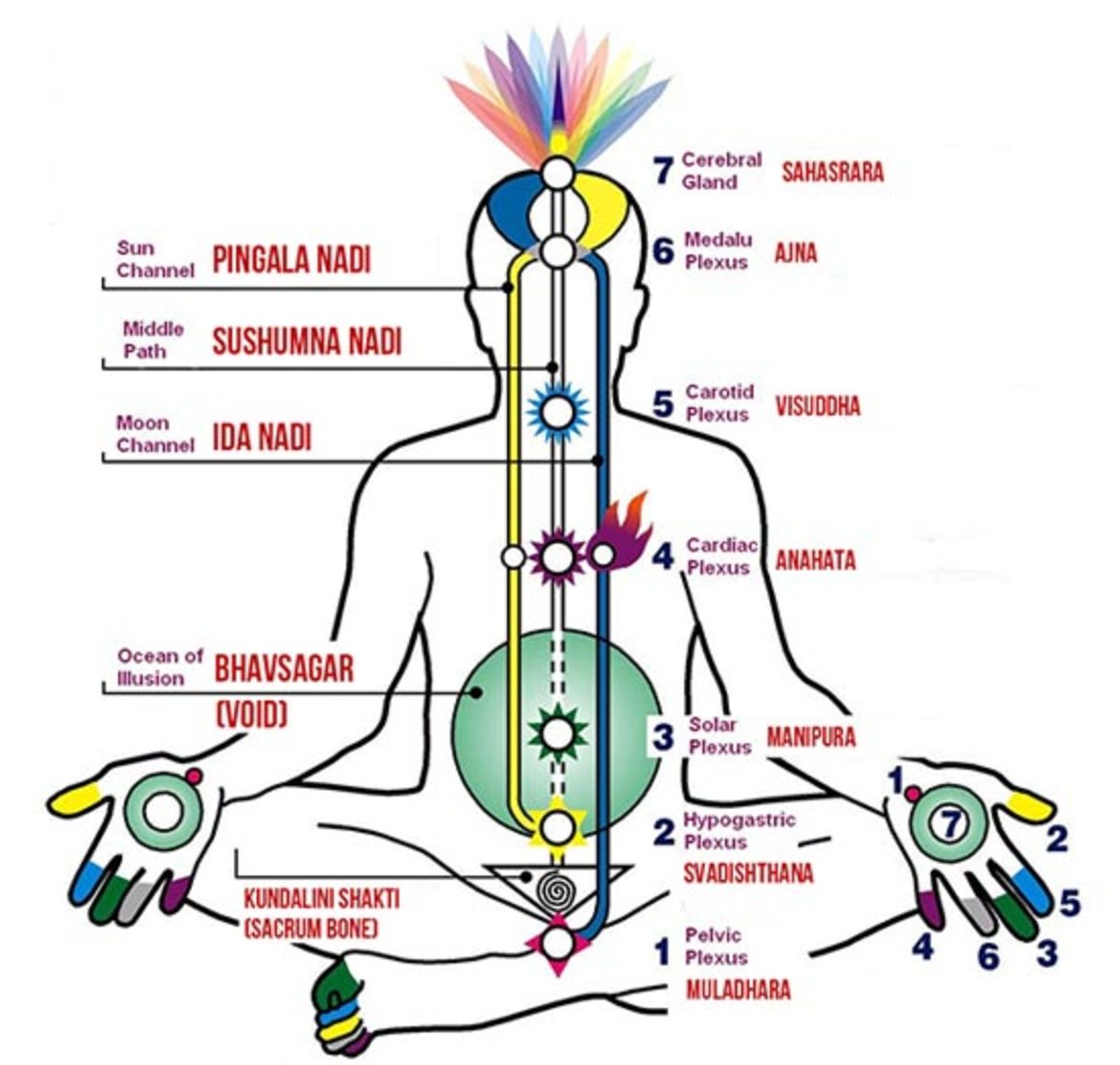HOW OUR BRAIN WORKS

OUR MAWVELOUS BRAIN
Thought I’d give you all (Now, just whom all do I think is out there reading this? Well, there better be a bunch of yas!), a peak into how the brain works. Now this is the simple version, but as simplified as it is, still accurate. When it comes to the complexity of neuroscience, and you’re not aspiring to be a neurologist, simple is good!
Throughout this blog, refer to the photo on your right. Note, this photo is taken from a 74 page "Primer" entitled Brainfacts produced by the Society For Neuroscience. You can download the entire book for no cost at http://www.sfn.org/index.aspx?pagename=brainfacts .
So here’s how it works. First there is reality. And we will not discuss the philosophical differences or even scientific differences as to what constitutes reality! But, hopefully we can all agree that we are continuously taking in information or data, if you like, from reality, whatever our reality is!
We take in this information or data through our sensory organs, you know, ears, eyes, nose, tongue, skin–are there more sensory organs? No, we will not delve into any phenomenon having to do with telepathy or other ways of taking in information which exclude sensory organs! Remember, simple. So the information, taken in by our sensory organs, goes "directly" to our THALAMUS which is located in our "middle" brain.
The thalamus is like a relay station. It decides what information to send on for cognitive processing. How it decides, I don’t know. But the implication might be that our sensory organs are perceiving more information than we are conscious or aware of. Kind of like the pictures you take with your digital camera. When you zoom in on a digital picture and move from side to side, there is a lot more information in the picture than you actually saw when you "shot" the picture. Wow! That’s an interesting phrase-- shoot the picture!
Now when the thalamus decides it will send on a piece of data, it sends it almost simultaneously to both the AMYGDALA, which is in the "middle" brain, and to our thinking brain which is located in our "top" brain or CEREBRUM. An important part of our cerebrum is the PREFRONTAL LOBE. It is there that we have consciousness of consciousness. It is there that we control our impulses, stay focused, and make decisions. You can see all of this in detail in the picture to your right.
Now, information flows back and forth, up and down, and in and around and over our entire brain (top, middle, bottom, and left and right hemispheres) so quickly, it is sort of pointless to talk about where the information goes first, because in a sense, there is no first. The information spreads out very quickly in a bush effect.
However, you might say that the information gets to our amygdala by priority mail. In some respect, the information gets to the amygdala similar to a "press leak."
The amygdala is the part of our brain that makes it possible for us to give emotional meaning to our experience. When the amygdala receives the data from the thalamus, it sends an immediate message to our muscles. We experience this message to the muscles as EMOTIONS or FEELINGS. The emotions we experience in our muscles MOVE us either toward the experience or away from the experience. That is why some folks refer to emotions as BIOLOGICAL MOTIVATORS. This movement to or away is not the same as the fight-flight reflex, but similar.
An aside, the fight-flight reflex originates from our brain stem or "bottom" brain. Sometimes the brain stem is referred to as the survival brain because its main job is to keep us alive and to monitor any event that could possibly lead to death. Unfortunately, the survival brain does not "think" so it cannot assess the effectiveness of its lifesaving measures. More on that later.
Just as we refer to our bottom brain as the survival brain, we sometimes refer to our "top" brain as our thinking brain and the middle brain as our emotional brain. The middle brain is also referred to as the limbic system.
Now, back to the thalamus. At the same time the information is being "leaked" to the amygdala, the thalamus also sends the information to the lobes of the cerebrum where we begin THINKING about our experience, where we begin to make sense of our experience. At this point in the process, the THINKING BRAIN (top brain) and the EMOTIONAL BRAIN (middle brain) begin having an absolutely mawvelous neurological conversation. If left to its own devices, the neurological conversation will keep us on track.
Let’s say you’re a three year old playing in the back yard, and you fall down and skin your knee. The amygdala sends a message to your muscles which are retracting, moving away, because you are experiencing pain and probably a little fear. Your thinking brain says, "Oh oh, you hurt yourself. And look, there’s blood. Better go find Mom or Dad." So up to now, your thinking brain and emotional brain are in sync.
Hopefully when you find Mom or Dad, they will validate your experience. "Oh, you hurt yourself. Let’s see here. I’m going to wash that out a little bit, and it will probably hurt, and I’m going to put some medicine on it and that will also sting. I’ll also blow on it and kiss it and that will make it ALL better for sure." So again the commentary from the big people matches your own brain’s assessment of your experience.
As we continue to grow and mature in age and wisdom, we will be able to both feel our experience and make rational sense (think about) of our experience. As we think about our experience, we will be able to identify the needs that our emotions are pointing us to. In both thinking and feeling our experience, and with the assistance of our prefrontal lobe and healthy caretakers, we will be able to make decisions about how to behave in a way that our own needs are met while not violating the needs of others.
But going back to our "boo boo" on the knee, what happens if Mom or Dad do not validate our experience? So Dad says to you, "Are you kidding me? You’re crying over that little scratch? What are you, a sissy? And guess what? I have to clean out the dirt from that little scratch, and TRUST me, it’s not going to hurt. So don’t be boo-hooing all over the place. You know if you want hurt, I can show you hurt. And I’m going to put some medicine on it, and it says right here, I know you can’t read, but it says right here, ‘won’t sting,’ so don’t be screaming or crying when I put the medicine on it."
Well, guess what, Dad? It hurts and it stings! So now what the big person is telling me is totally out of sync with that wonderful neurological conversation in my brain. And for most of us, that out of sync-ness continues throughout our growing-up years. We speak our ""truth" but the big people tell us that we are not seeing what we see or hearing what we hear or feeling what we feel or knowing what we know.
It’s like this. You’re about four years old and "butt-height" to all the big people in a crowded elevator. It just happens to be summer and the air conditioning isn’t working too well in the elevator. You’re also starting out on the top floor and within seconds of the elevator door closing, someone lets go of an SBD, and you get the full impact. You look up at Mom and say quite loudly, "Someone farted!" Mom scrunches up her face, covers your mouth with her hand, and leans down and whispers, "You know darn well no one farted and don’t be talking like that, in fact, don’t ever say something like that again, ever." And then she gives you a swat as you exit the elevator!
It only gets worse. One day, you notice that Mom looks sad, and you say to her, "Mommy, why are you so sad?" She adamantly replies, "I AM NOT SAD, and even if I was, it’s none of your business. Do you get that?"
Or you’re crying and Dad shouts, "What are you crying about now?" And for some reason, you lose your sanity and respond with, "Because you’re yelling at me." And Dad yells back, "I’m NOT YELLING at you."
Or here’s a good one. You see Dad stretched out on the front lawn. He’s not moving, and you’re not sure what’s happened. But it scares you. You shout, "Mom, Mom, Dad’s dead." Mom, of course, comes running and looks out the window and says, "Oh, Dad’s just camping." She figures you are too young to understand "drunk on his ass again." So sure enough, a couple of weeks later, you look out the window and there’s Dad again stretched out motionless, and you shout, "Mom, Dad’s camping again."
It gets even more intense when you catch Dad kissing another woman or Mom in bed with another man besides Dad, and they basically tell you that you did not see what you saw. And sometimes they might add that they will kill you if you speak a word about it.
Obviously, it is not that intense for all of us, but there is enough denial of our experience by the big people that by the time we are adults, we do not see what we see, we do not hear what we hear, we do not feel what we feel, and in general, we do not know what we know. We are not able to feel our experience nor make rational or logical sense of our experience.
It is very typical that folks come into the office and tell me that they think they are depressed and maybe feel a little depressed, but they don’t know why. When I ask them what is going on in their life that is depressing, they will often hesitate, but then rattle off a series of very depressing life events. But here is the kicker. They make no connection between these depressing life events and the depression they think they are experiencing.
"So you think that my divorce two years ago....my mother’s death last year....my ‘bout’ with breast cancer....my best friends’ death.....losing my home.....my job....has something to do with it?" I’m always tempted to humorously say, but I don’t, "Probably not! Can’t imagine why it might be connected!""
So part of the "work" of being all growed-up is "rebraining" our brain so once again we can see what we see, hear what we hear, feel what we feel, and know what we know. At first, it can be scary. It’s like turning the water back on, and you hear all kinds of noises and weird sounds in the pipes. The same with our brain and body. When we allow ourselves to experience what we experience, after we have been "shut down" for a period of time, it can feel unsettling and sometimes like something is going to burst or explode.
Now just a little trivia, while we are at it. We have about 100 billion brain cells, called neurons, and at any given moment, when one brain cell fires, approximately ten thousand other neurons fire simultaneously. There’s an expression, "what fires together, gets wired together." So over time, as we take in information, we process that information almost simultaneously in a variety of different brain "centers." As we process similar information in similar ways over and over again, we begin to generalize our experiences and we create mental models of our reality. And guess where those mental models are stored? Yes, in the amygdala!
So, for example, I have a mental model that fire trucks are red. And when I’m driving by a fire truck that is yellow, I literally have to slow down in my car and look very carefully. Is this really a fire truck or what? When I instinctively check the rear view mirror of course there is a line of angry drivers wondering what the heck I’m slowing down for! But my brain cannot make sense of a yellow fire truck, so I have to check it out to see for sure that it is indeed a fire truck.
Since these mental models are "stored" in our amygdala, they are totally outside our consciousness. In fact, we do not have conscious access to any of the information that is stored in our amygdala. Just for your information, the amygdala is on line and fully functioning at age seven months in the womb. Yes! And at seven months in utero many of our emotional experiences originate in Mom's emotional experience.
We could do a whole other blog on neuropeptides which are amino acid chains that are emotion specific and create an emotionally specific "bias" throughout our entire body. So if I wake up in the morning and I begin thinking and feeling that it's going to be a bad day, sure enough, my brain creates neuropeptides for a bad day. These neuropeptides create a pair of bad day glasses through which I just might perceive my entire day. The reverse can also be true. These neuropeptides as well as other kinds of neurochemicals will pass from Mom to me while I am in the womb.
As you might be thinking, the "stuff" stored in our amygdala can become quite problematic since it is beyond or consciousness, and we can become easily stuck in old patterns and biases.
The HIPPOCAMPUS, which you can see from the photo, sits right next to the amydala, and begins functioning around our first birthday. When fully up to speed, the hippocampus makes it possible for us to remember both events and facts. It also helps us with visual mapping, and developing an autobiographical sense of self over time. So it is a pretty important part of our brain. Fortunately, we do have conscious access to the information stored in our hippocampus. The hippocampus is one of those parts of the brain that is seriously impacted by Alzheimers.
However, during any intense emotional experience, the chemistry that the hippocampus needs to remember facts and events is neutralized by the stress hormones. Let's look at this in more detail.
Whenever we have an intense emotional experience, one which takes us over a "threshold," our brain stem is likely to take over the operation of the brain and of our entire body. We go on autopilot, so to speak. So if an event is too frightening, too scary, too painful, too inexplicable, too dangerous, we will "go over" an emotional threshold almost like going over Niagra Falls in a row boat! And when this happens, the dialogue between the thinking brain and emotional brain is shut down. We no longer think or feel. The brain stem directs us to save ourselves and we will unconsciously use whatever survival behaviors worked in the past.
When the event is over, the brain stem will ask us if we are still alive. If the answer is YES, then the brain stem says, "Oh Goodie! So it worked and we will restore that behavior and do the exact same thing the next time we are about to die."
Unfortunately, as we indicated above, the brain stem does not think and consequently does not have the ability to assess whether the "lifesaving" behavior was in fact life saving or could be lifesaving in the future. That is why it is absolutely imperative that we learn how to debrief all intense emotional experiences or traumas..
Since the chemicals needed by the Hippocampus to record the event in memory are neutralized, guess what happens? The event itself does not get processed in our hippocampus, but the intense emotions, associated with the event, are stored, out of consciousness, in the amygdala which becomes like a huge reservoir of intense emotions. These emotions lie there waiting to be lit up or fired off. And that is exactly what happens. The emotions fire off in response to any event that even remotely reminds the brain of prior emotionally intense experiences or traumas. Since we do not have conscious access to what is stored in the amygdala, we have no way to deal with this "reservoir" of emotions which just sits there almost like gasoline.
Debriefing an intense emotional experience makes it possible for us to literally create a "story" about the traumatic event. Once the story line is created, then the emotions associated with the event can be discharged out of the amygdala and the emotions and story line together stored consciously in the hippocampus and available for recall. Now the emotions are no longer vulnerable to being triggered outside of our conscious awareness.
The trauma eventually becomes a part of our bigger life story and part of our past. Unfortunately for a court of law, memory in terms of trauma is more a function of knowing that an event is over than it is to recall the exact facts of the event.
Debriefing is a process, and usually it is best to do the debriefing with other people, not just alone, where we evaluate what happened and what action we took and whether or not that action was in fact helpful? Some times, we survive despite the action we take, and in fact, sometimes the actions we take are quite counterproductive, but we will never know that unless we take the time to debrief. We can take anyone through a debriefing experience, even an infant. They will not understand the words obviously, but they will benefit from the soothing tone of our voice, the comfort of our stroking hands and fingers, and whatever other comforting actions we are taking to carry them through a painful, scary, or life threatening event. Instead of staying on high alert, the infant’s body will have an opportunity to come back to normal, more quickly which will reduce the probability of the brain storing non productive but automatic survival behaviors.
For an infant, such survival behaviors are often something like holding the body stiff or keeping the body tensed to avoid or tolerate pain.
Debriefing is extremely important for any of us who are in high risk occupations or high risk situations: fire folks, paramedics, police personnel, surgeons, nurses, combat soldiers, caretakers in general, and anyone who has experienced something out of the ordinary. For example, a bank teller who has been robbed. I can’t say enough about the importance of debriefing in getting our lives truly back to normal and not just burying the incident to bubble up again later.
When a paramedic responds to an infant death, for example, if he or she does not debrief the event, they will become emotionally disconnected or distant from their own very young children
and they will not even know it. Unfortunately, the children will know it.
A doctor may feel powerless to reduce pain for his patients or worse feel inept when he has to inflict pain on his patients as part of a medical procedure or even worse yet feels defeated when he loses patients in surgery. In order to maintain his professionalism in both skills and bedside manner, the doctor must disconnect emotionally either a little or a lot. Whenever the doctor has to disconnect emotionally, it is imperative that he or she takes the time to debrief and reconnect. Otherwise, the doctor will become emotionally distant all the time with his patients and disconnected from friends and family members when they are ill or recovering or worse dying.
When the combat soldier does not sufficiently debrief, he or she does not know that the war is over or that they are no longer on the battlefield. They can be very dangerous to be around because they are on high alert and will respond to anything that even remotely appears as an attack, for example a tap on the shoulder by an unsuspecting shopper in WalMart who wants to know on what aisle is the toothpaste. This is not about being a weak or bad soldier. It’s how the soldier needs to be in combat in order to survive.
Once we begin to debrief a trauma or an intense emotional experience, we may begin to feel feelings that were "blocked out" by the brain stem during the actual trauma. The person deserves to feel these emotions and for them to be integrated into the overall experience. We are learning a great deal how our brain integrates intense emotional experiences by processing the experience in both the right and left hemispheres of the brain.
The Integration of information between our hemispheres becomes an important part of brain functioning around age six because that is when the corpus callosum fully matures. You can see the corpus callosum in the picture to the right of the blog. The Corpus callosum makes it possible for the left and right hemispheres to communicate back and forth and integrate information so that we have what is called a coherent experience of our experience. It is said that women have a wider corpus callosum than men which seems to imply that women are able to integrate much more rapidly both the logic and the emotion of an experience. As men, we are slow pokes and often get stuck either in our logic or in our emotion. And we are speaking just not of trauma, but of life in general! In the picture to your right, the corpus callosum is the half circle like area that runs across the entire brain, so to speak, just above that smaller half circle directly abovethe thalamus, The corpus callosum a lighter color pink.
I hope you are beginning to see just how important emotions are in our life. When it comes to emotions like anger, the emotion is not what is problematic, but our inability to integrate the emotion or our lack of capacity to be conscious of the emotion and to decide how to behave with respect to the emotion. These emotional assessments, so to speak, are a function of our prefrontal lobe which is part of our thinking brain.
Emotions are also very powerful signals that we are in NEED. Again debriefing comes into play here. If we do not debrief an intense emotional experience, not only does the emotion slosh around in the amygdala like gasoline waiting to be lit, but the needs connected to those emotions slosh around as well. So I walk around with a vague sense that I have no control over my life, but there is nothing going on in the environment that says I don;t have control over my life and so sometimes I unwittingly set myself up NOT to have control so at least this vague sense of lacking control makes some kind of sense. There is a short but informative description of needs on page 42 of my book, From The Frying Pan To The Jacuzzi, Gourmet Recipes For A Gourmet Relationship.
With respect to needs, the most challenging awareness is that, as big people, we can easily postpone getting our needs met and nothing bad will happen except we will mature a little more. However, for little people, especially infants, unmet needs can literally place the child at risk.
So most of us probably have quite a bit of stuff sloshing around in our amygdalas (we actually have two of them, one on each side of the brain). Debriefing all of that "stuff" can literally turn around the subjective and objective experience of our life in general and also bring about a dramatic change in our relationships.
We mentioned it briefly above, but a big key to debriefing is getting the right and left hemispheres of the brain to process and integrate the trauma or intense emotional experience into the "story line" of our life. That is what the left and right hemisphere do. They take all that information that we take in through our sensory organs and integrate and weave it together both logically and emotionally.
There are complex ways that intense emotional experiences can be integrated, for example, through hypnosis or EMDR therapy. But there are also simple ways to debrief and integrate emotionally intense exeriences. One can talk about the experiences and allow yourself to feel the feelings that come up, really feel them. One may need to talk and talk and talk and cry or scream and shout or whatever A LOT. For many of us who are emotionally disconected, we can't stand it when someone can't seem to move on, but if given the opportunity to both verbalize and emote about the experience, they will be able to move on.
While someone is verbalizing and emoting, it is important that we are giving them feedback just like the story at the beginning about the three year old. Our feedback would look like this. "Wow, that was awful.....scary....I can't believe you got through it....Hey, I want you to know that I can handle hearing about it....You know the best part of your story? You survived and it's over. I know it probably doesn't feel like it's over, but you are safe now......"
Telling our story is the simplest way for integration to take place. And there is nothing like a good therapist and some top notch therapeutic intervention.
Once the integration takes place, we actually remember more of the facts of the trauma or intense emotional experience, and the experience becomes a part of our past. It no longer triggers us, haunts us, or leave us with a myriad of unmet needs that make little or no sense. We do move on.
So there’s some good stuff for you to know about your brain and your mind. Your homework is to take a personal assessment. Do I let myself see what I see, hear what I hear, smell what I smell, feel what I feel, and know what I know? If not, then you can get together with some close friends or loved ones and begin to turning on again the process of feeling and knowing.
And also to assess just how many emotionally intense or traumatic experiences you have left undebriefed! Again, find some close friends or loved ones and begin talking about how you might want to debrief. A good therapist can also be helpful here. You don’t have to be crazy to go to therapy, only a little human and a little wounded. Well, yea, you can be a lot human and a lot wounded and still qualify!
Comments or questions are WELCOMED.









